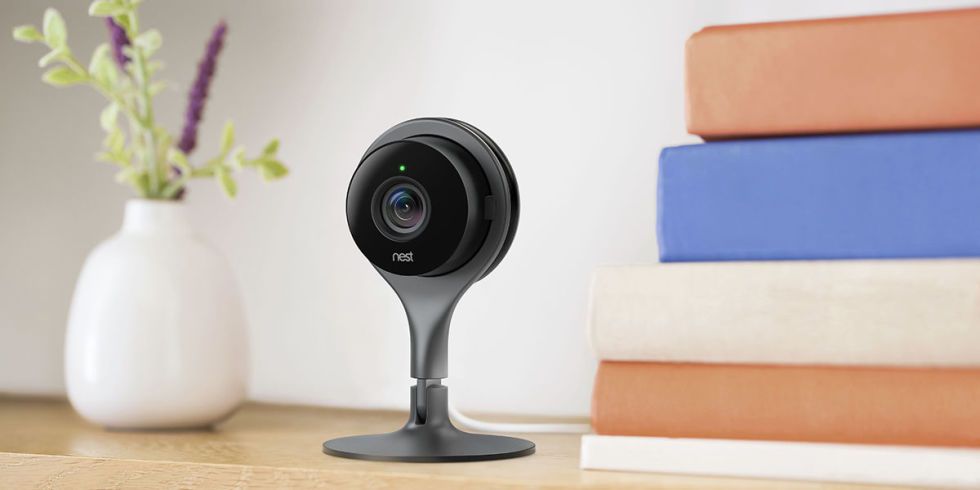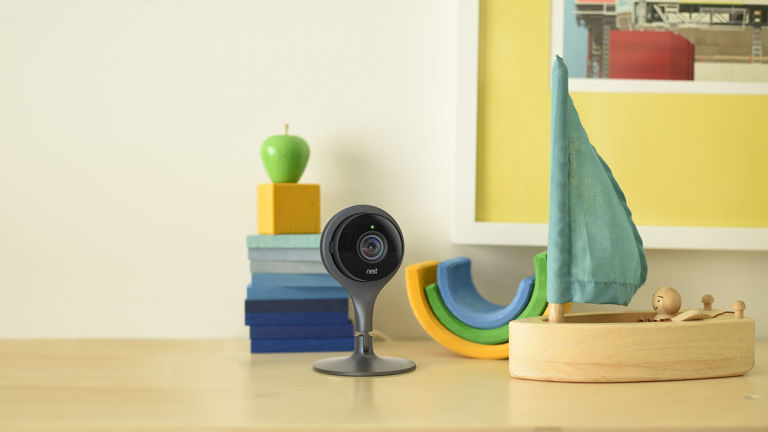
Sure, you can use the
wonders of web-based video calling to speak to the parents back east,
but its potential goes way beyond that. How about using it to keep watch
on your home while you're at the office or out of town altogether?
It's
not as difficult as you might think and as usual there are a number of
alternative approaches to match your budget and current level of
tech-savviness. As long as there's Wi-Fi at your home, you can set up a
camera to keep watch on what's happening.
With iSmartAlarm
If you really want
to go all out on your living room monitoring kit, and there's a home
security fund burning a hole in your wallet, then iSmartAlarm
is just about as comprehensive as they come. An intelligent security
camera is just one part of this extensive system, which covers
everything from alerts when family members get home, to timers for your
lights so you can pretend to be at home when you aren't. This is a
solution that doesn't come cheap though, particularly if you want all of
the components.
We're
here for the video surveillance, which comes in the form of the chunky
iCamera Keep. It doesn't look like the world's most modern bit of kit
but what it lacks in form it makes up for in function. You can pan and
tilt the camera right from your phone and take snaps manually as well as
relying on the automatic motion detectors to do the job for you.
A separate CubeOne box (which acts as the brains for your whole
iSmartAlarm system) can record video footage while you're away for you
to review at a later date.
There's
a bunch of compatible stuff you can add to the camera from iSmartAlarm:
Contact sensors so you know when doors are being opened, smart switches
for turning appliances on and off, motion sensors for detecting
movement in a particular area, and so on, with everything controlled
from your Android or iOS smartphone. Prices start at $199 and go upwards
from there, but there's no subscription to pay—all the costs are up
front. If you're looking for a comparable alternative then Honeywell has a broad range of home security kit as well.
With a Nest Cam or Canary

A step down from a full-on security system but still a dedicated solution with plenty of bells and whistles, the $199 Nest Cam
is one of Google's latest hardware projects — it's the one to go for if
you just want the video feed functionality without all of the other
home security add-ons and features rolled into the package. It looks a
bit like an old-school webcam but it connects directly to the web and
can pipe video to you wherever you are, and it has some useful features
like a night vision mode.
That's
just for starters: If you chip in a few more dollars a month you can
add recordings that are stored in the cloud for 10 days ($10/month) or
30 days ($30/month). With the Nest Cam alone, you only get a live feed
plus alerts when the camera detects something happening—Nest Aware (as
the extra premium service is called) adds a summary of the day's
incidents, an archive of footage, the ability to set activity zones and a
timelapse mode for burning through a lot of video very quickly. You can
also set up subscriptions for multiple cameras.
You
get a month of free Nest Aware when you buy a Nest Cam. It can be left
free-standing or fixed to a wall or fridge (there's a built-in magnet)
and the camera lens records in 1080p HD quality with a 130-degree wide
angle view. As you would expect, it works pretty seamlessly with
Google's other Nest products too.
If you want a robust and professional system for watching your living
room from anywhere (via web, iOS or Android), but don't want to pay full
whack, Nest Cam is worth a look.
And if the subscription turns you off, you can also check out Canary,
it's a little bulkier, but for the same $200 it performs all of the
important features the Nest does, but comes with motion alerts and
limited cloud storage for no extra fee.
With Skype and a webcam
Skype has a
little-known feature that lets you connect remotely from another
computer, with no input necessary from your home machine. The beauty of
this one is you don't need any extra equipment if you already have a PC
(or laptop) at home with a webcam—Skype is free to download and use as
well, so you can get started pretty much straight away without spending
anything.
Open
up Skype on Windows and get to the Options dialog via the Tools menu
(it's under Skype and Preferences on a Mac). If you click Calls, then
Show advanced options, you should see a box labelled Answer incoming
calls automatically—tick this box and choose to start your video feed
automatically too. Any incoming Skype calls will automatically get put
straight through to your video feed, giving you a glimpse of your living
room, pets and everything else at home.
You've
probably spotted a potential flaw here: Your Skype contacts video
calling you when you're away. To get around this you need to set up a
new Skype account solely for the purpose of watching your home, then add
your original Skype account as the one and only contact. In the same
dialog as the auto-accept setting you can make sure you're only
receiving calls from confirmed contacts.
You
can then tap into the video feed from wherever you can get Skype: Your
smartphone, an Internet cafe, a browser on the other side of the world,
or anywhere else.
In
theory there's nothing to stop you setting up single-purpose Skype
accounts for every computer (and room) in your house, and with webcams
costing very little you could feed one to the window to keep check on
the garden too. On the downside, your various machines have to stay on
all the time, waiting for your call.







0 comments:
Post a Comment
What's On Your Mind?